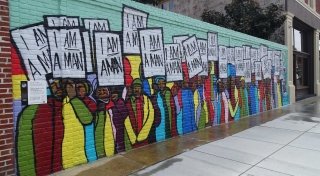
Learning Goals and Commitment to an Inclusive Curriculum
Statement of Pedagogical Commitment
History requires us to ask questions about the world we live in and challenges us to take action toward change. Historians must consider how dynamics of power shape all facets of human experience from the lives of the marginalized to the elite and how the historical record highlights or silences voices of the past.
The St. Lawrence History department is committed to a curriculum that exposes students to diverse perspectives and histories, such as the ways enslaved peoples fought for liberation, workers’ rights movements, the intimate relationships of families, and the power struggles of monarchs and presidents, to name only a few.
History faculty are committed to fostering a classroom environment that is welcoming and supportive, while also challenging students to analyze diverse perspectives. Learning to empathize with people and perspectives far removed from your own is an important skill that requires a strong commitment to constructive dialogue and respectful debate.
Historians are often forced to grapple with viewpoints that conflict with their own identities, values and beliefs. To uncover the harsh realities of systemic oppression and the ways marginalized voices have fought back against this, historians must engage with the realities of violence and discrimination to learn from the past.
History classes confront tough issues and interrogate historical evidence that can be shocking and sometimes difficult to engage with. Faculty may assign historical and contemporary texts and images by scholars and artists who are deploying words and images not for discriminatory and hurtful purposes but to shine a light on the nature of inequality and oppression and/or to reclaim those words and images for the purposes of empowerment. We analyze these texts and historic primary sources to demonstrate and interrogate the full range of struggle and resistance that represents historically oppressed and marginalized peoples.
The study of history expands and enriches our understanding of the diversity of human lives over time across such boundaries as gender, culture, class, race, region, and religion. It helps us think about how and why the world we know came to be and about our own places in it.
This commitment to diversity, equity and inclusion in History classes informs each of our core departmental goals, which enables students to:
- Know historical facts, narratives, and methods
- Evaluate and interpret both primary and secondary sources and construct historical arguments
- Communicate effectively orally and in writing
- Conduct historical research
- Understand the value of historical context in interpretating current events
*Banner Image- The "I'm a Man" mural at the top of this page was designed by rap artist Marcellous Lovelace in a modern graffiti style and installed by BLK75. It can be found on S Man St in Memphis, TN, USA, close to the National Civil Rights Museum. It shows the Sanitation Workers Protest March on March 28, 1968, an important event of the Civil Rights Movement, originally captured by photographer Richard L. Copley
